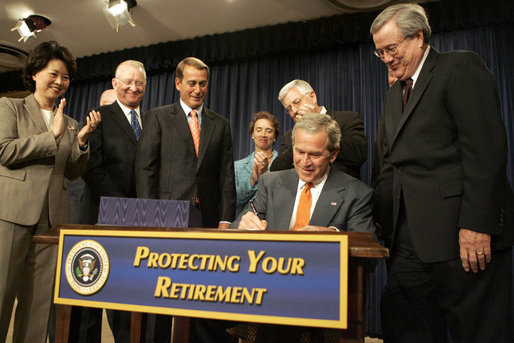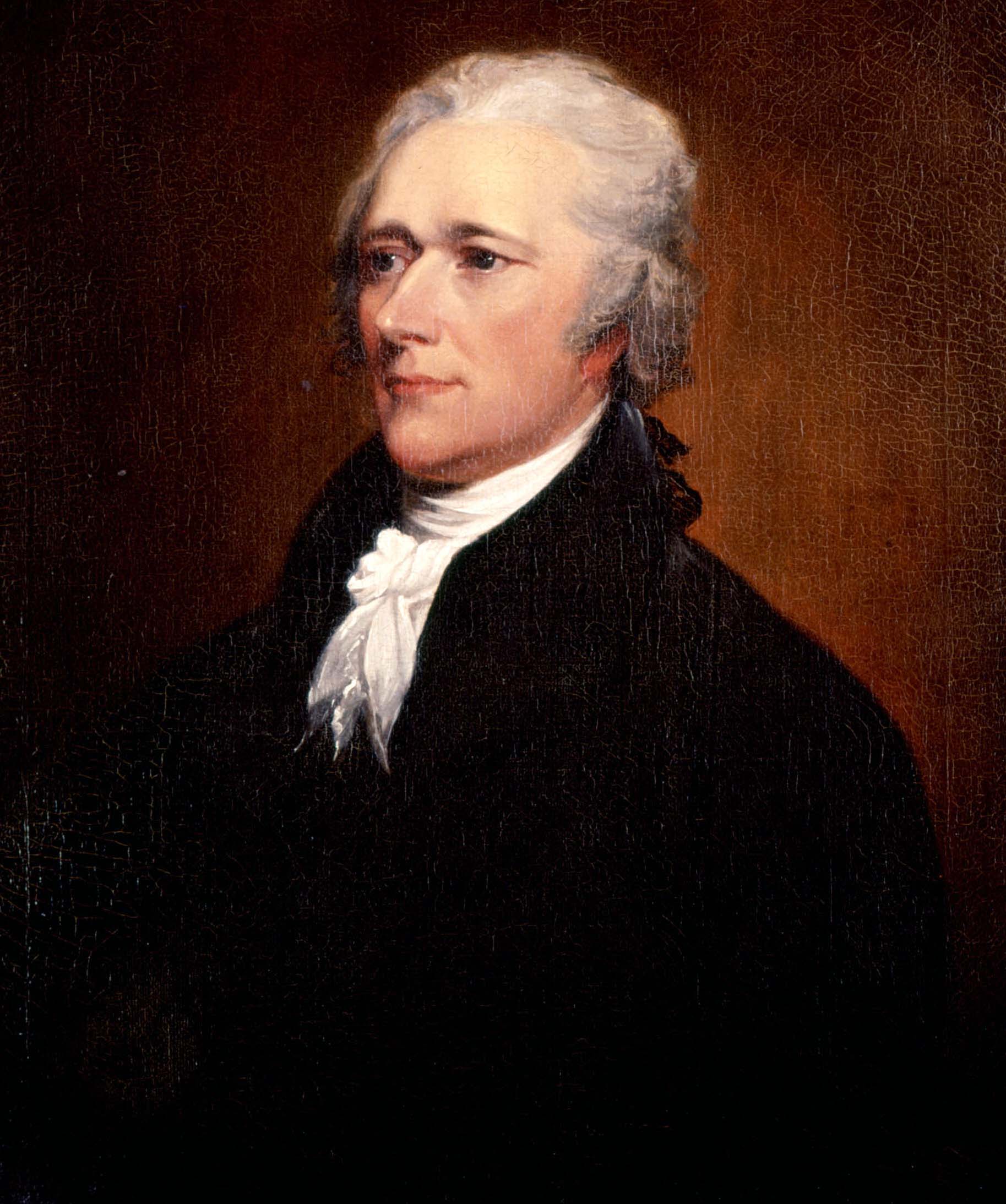|
Pension Benefit Guarantee Corporation
The Pension Benefit Guaranty Corporation (PBGC) is a United States federally chartered corporation created by the Employee Retirement Income Security Act of 1974 (ERISA) to encourage the continuation and maintenance of voluntary private defined benefit pension plans, provide timely and uninterrupted payment of pension benefits, and keep pension insurance premiums at the lowest level necessary to carry out its operations. Subject to other statutory limitations, PBGC's single-employer insurance program pays pension benefits up to the maximum guaranteed benefit set by law to participants who retire at 65 ($67,295 a year as of 2018). The benefits payable to insured retirees who start their benefits at ages other than 65 or elect survivor coverage are adjusted to be equivalent in value. [...More Info...] [...Related Items...] OR: [Wikipedia] [Google] [Baidu] |
K Street (Washington, D
K Street may refer to: * K Street (Sacramento) K Street is a historic street in Sacramento, California, United States. It spans from Old Sacramento, through Downtown Sacramento and Midtown Sacramento, ending in East Sacramento. Other discontinuous segments of K Street in East Sacramento are s ..., a street in Sacramento, California, United States * ''K Street'' (TV series), a 2003 HBO television series about lobbyists * K Street (Washington, D.C.), a street in Washington, D.C., United States * Lobbying industry in the United States, metonymically, as many lobbyists have traditionally had offices on the Washington, D.C., street {{disambiguation, road ... [...More Info...] [...Related Items...] OR: [Wikipedia] [Google] [Baidu] |
Employee Retirement Income Security Act Of 1974
The Employee Retirement Income Security Act of 1974 (ERISA) (, codified in part at ) is a U.S. federal tax and labor law that establishes minimum standards for pension plans in private industry. It contains rules on the federal income tax effects of transactions associated with employee benefit plans. ERISA was enacted to protect the interests of employee benefit plan participants and their beneficiaries by: * Requiring the disclosure of financial and other information concerning the plan to beneficiaries; * Establishing standards of conduct for plan fiduciaries; * Providing for appropriate remedies and access to the federal courts. ERISA is sometimes used to refer to the full body of laws that regulate employee benefit plans, which are mainly in the Internal Revenue Code and ERISA itself. Responsibility for interpretation and enforcement of ERISA is divided among the Department of Labor, the Department of the Treasury (particularly the Internal Revenue Service), and ... [...More Info...] [...Related Items...] OR: [Wikipedia] [Google] [Baidu] |
Collective Bargaining Agreements
Collective bargaining is a process of negotiation between employers and a group of employees aimed at agreements to regulate working salaries, working conditions, benefits, and other aspects of workers' compensation and rights for workers. The interests of the employees are commonly presented by representatives of a trade union to which the employees belong. The collective agreements reached by these negotiations usually set out wage scales, working hours, training, health and safety, overtime, grievance mechanisms, and rights to participate in workplace or company affairs. The union may negotiate with a single employer (who is typically representing a company's shareholders) or may negotiate with a group of businesses, depending on the country, to reach an industry-wide agreement. A collective agreement functions as a labour contract between an employer and one or more unions. Collective bargaining consists of the process of negotiation between representatives of a union and em ... [...More Info...] [...Related Items...] OR: [Wikipedia] [Google] [Baidu] |
United States Senate
The United States Senate is the upper chamber of the United States Congress, with the House of Representatives being the lower chamber. Together they compose the national bicameral legislature of the United States. The composition and powers of the Senate are established by Article One of the United States Constitution. The Senate is composed of senators, each of whom represents a single state in its entirety. Each of the 50 states is equally represented by two senators who serve staggered terms of six years, for a total of 100 senators. The vice president of the United States serves as presiding officer and president of the Senate by virtue of that office, despite not being a senator, and has a vote only if the Senate is equally divided. In the vice president's absence, the president pro tempore, who is traditionally the senior member of the party holding a majority of seats, presides over the Senate. As the upper chamber of Congress, the Senate has several powers o ... [...More Info...] [...Related Items...] OR: [Wikipedia] [Google] [Baidu] |
President Of The United States
The president of the United States (POTUS) is the head of state and head of government of the United States of America. The president directs the executive branch of the federal government and is the commander-in-chief of the United States Armed Forces. The power of the presidency has grown substantially since the first president, George Washington, took office in 1789. While presidential power has ebbed and flowed over time, the presidency has played an increasingly strong role in American political life since the beginning of the 20th century, with a notable expansion during the presidency of Franklin D. Roosevelt. In contemporary times, the president is also looked upon as one of the world's most powerful political figures as the leader of the only remaining global superpower. As the leader of the nation with the largest economy by nominal GDP, the president possesses significant domestic and international hard and soft power. Article II of the Constitution establis ... [...More Info...] [...Related Items...] OR: [Wikipedia] [Google] [Baidu] |
Pension Protection Act Of 2006
The Pension Protection Act of 2006 (), 120 Stat. 780, was signed into law by U.S. President George W. Bush on August 17, 2006. Pension reform This legislation requires companies who have underfunded their pension plans to pay higher premiums to the Pension Benefit Guaranty Corporation (PBGC) and extends the requirement of providing extra funding to the pension systems of companies that terminate their pension plans. It also requires companies to analyze their pension plans' obligations more accurately, closes loopholes that previously allowed some companies to underfund their plans by skipping payments, and raises the cap on the amount employers are allowed to invest in their own plans. This will allow employers to deduct more money using the pension tax shield in times of high profits. It requires actuaries to use the equivalent of the projected accrued benefit cost method for determining annual normal cost. Other elements: * Provides statutory authority for employers to en ... [...More Info...] [...Related Items...] OR: [Wikipedia] [Google] [Baidu] |
Chairman Of The Board
The chairperson, also chairman, chairwoman or chair, is the presiding officer of an organized group such as a board, committee, or deliberative assembly. The person holding the office, who is typically elected or appointed by members of the group, presides over meetings of the group, and conducts the group's business in an orderly fashion. In some organizations, the chairperson is also known as ''president'' (or other title). In others, where a board appoints a president (or other title), the two terms are used for distinct positions. Also, the chairman term may be used in a neutral manner not directly implying the gender of the holder. Terminology Terms for the office and its holder include ''chair'', ''chairperson'', ''chairman'', ''chairwoman'', ''convenor'', ''facilitator'', '' moderator'', ''president'', and ''presiding officer''. The chairperson of a parliamentary chamber is often called the ''speaker''. ''Chair'' has been used to refer to a seat or office of authority ... [...More Info...] [...Related Items...] OR: [Wikipedia] [Google] [Baidu] |
United States Secretary Of The Treasury
The United States secretary of the treasury is the head of the United States Department of the Treasury, and is the chief financial officer of the federal government of the United States. The secretary of the treasury serves as the principal advisor to the president of the United States on all matters pertaining to economic and fiscal policy. The secretary is a statutory member of the Cabinet of the United States, and is fifth in the presidential line of succession. Under the Appointments Clause of the United States Constitution, the officeholder is nominated by the president of the United States, and, following a confirmation hearing before the Senate Committee on Finance, is confirmed by the United States Senate. The secretary of state, the secretary of the treasury, the secretary of defense, and the attorney general are generally regarded as the four most important Cabinet officials, due to the size and importance of their respective departments. The current secretary of ... [...More Info...] [...Related Items...] OR: [Wikipedia] [Google] [Baidu] |
United States Secretary Of Commerce
The United States secretary of commerce (SecCom) is the head of the United States Department of Commerce. The secretary serves as the principal advisor to the president of the United States on all matters relating to commerce. The secretary reports directly to the president and is a statutory member of Cabinet of the United States. The secretary is appointed by the president, with the advice and consent of the United States Senate. The secretary of commerce is concerned with promoting American businesses and industries; the department states its mission to be "to foster, promote, and develop the foreign and domestic commerce". Until 1913, there was one secretary of commerce and labor, uniting this department with the United States Department of Labor, which is now headed by a separate United States secretary of labor. Secretary of Commerce is a Level I position in the Executive Schedule, thus earning a salary of US$221,400, as of January 2021. The current secretary of com ... [...More Info...] [...Related Items...] OR: [Wikipedia] [Google] [Baidu] |
United States Secretary Of Labor
The United States Secretary of Labor is a member of the Cabinet of the United States, and as the head of the United States Department of Labor, controls the department, and enforces and suggests laws involving unions, the workplace, and all other issues involving any form of business-person controversies. Formerly, there was a Department of Commerce and Labor. That department split into two in 1913. The Department of Commerce is headed by the secretary of commerce. Secretary of Labor is a Level I position in the Executive Schedule, thus earning a salary of US$221,400, as of January 2021. Marty Walsh has been Secretary since being sworn in on March 23, 2021. He was confirmed the previous day by the Senate as the last member of Joe Biden's cabinet, after being nominated by President Joe Biden on January 7, 2021. List of secretaries of labor ; Parties (13) (16) Status Line of succession The line of succession for the Secretary of Labor is as follows: # Deputy Se ... [...More Info...] [...Related Items...] OR: [Wikipedia] [Google] [Baidu] |
Board Of Directors
A board of directors (commonly referred simply as the board) is an executive committee that jointly supervises the activities of an organization, which can be either a for-profit or a nonprofit organization such as a business, nonprofit organization, or a government agency. The powers, duties, and responsibilities of a board of directors are determined by government regulations (including the jurisdiction's corporate law) and the organization's own constitution and by-laws. These authorities may specify the number of members of the board, how they are to be chosen, and how often they are to meet. In an organization with voting members, the board is accountable to, and may be subordinate to, the organization's full membership, which usually elect the members of the board. In a stock corporation, non-executive directors are elected by the shareholders, and the board has ultimate responsibility for the management of the corporation. In nations with codetermination (such a ... [...More Info...] [...Related Items...] OR: [Wikipedia] [Google] [Baidu] |
Annuity (financial Contracts)
A life annuity is an annuity, or series of payments at fixed intervals, paid while the purchaser (or annuitant) is alive. The majority of life annuities are insurance products sold or issued by life insurance companies however substantial case law indicates that annuity products are not necessarily insurance products. Annuities can be purchased to provide an income during retirement, or originate from a ''structured settlement'' of a personal injury lawsuit. Life annuities may be sold in exchange for the immediate payment of a lump sum (single-payment annuity) or a series of regular payments (flexible payment annuity), prior to the onset of the annuity. The payment stream from the issuer to the annuitant has an unknown duration based principally upon the date of death of the annuitant. At this point the contract will terminate and the remainder of the fund accumulated is forfeited unless there are other annuitants or beneficiaries in the contract. Thus a life annuity is a form ... [...More Info...] [...Related Items...] OR: [Wikipedia] [Google] [Baidu] |








